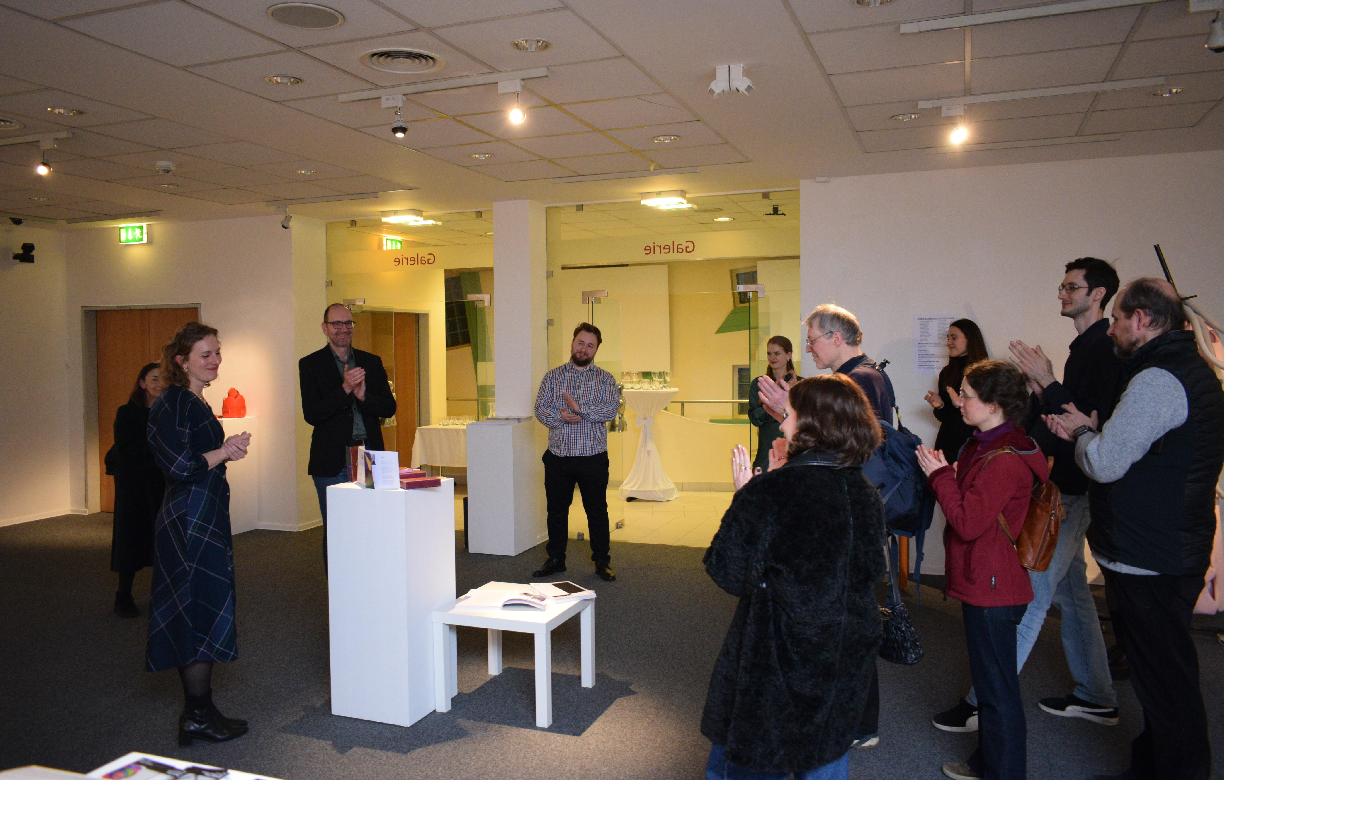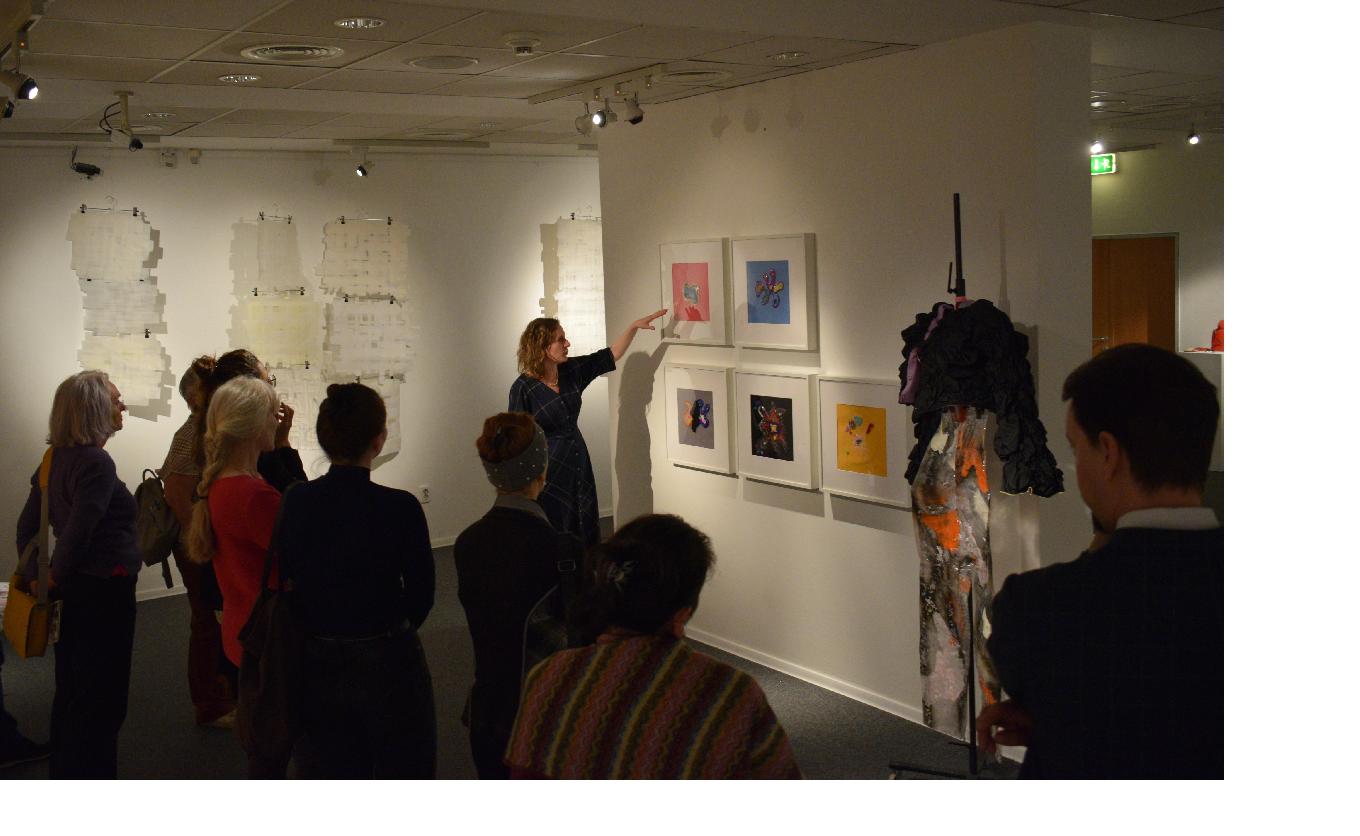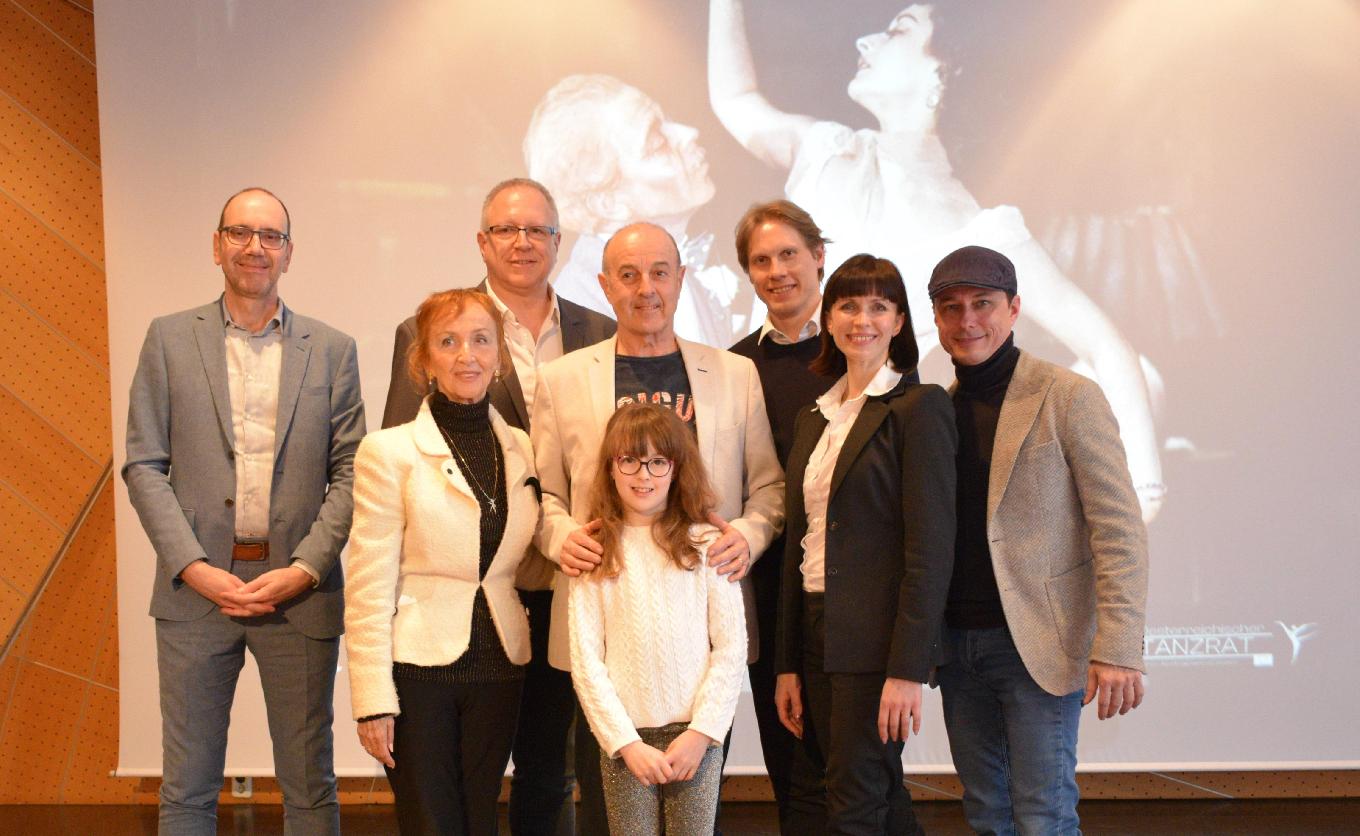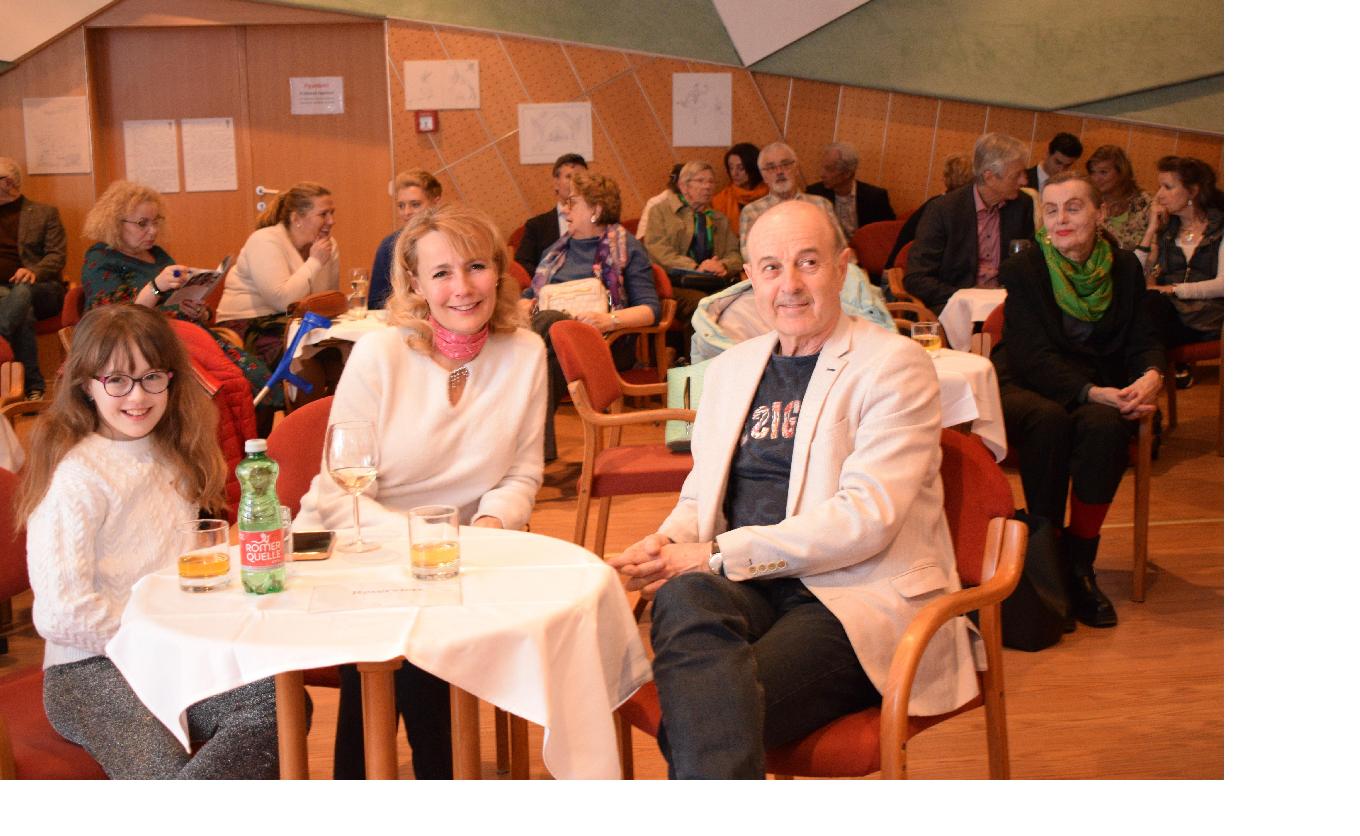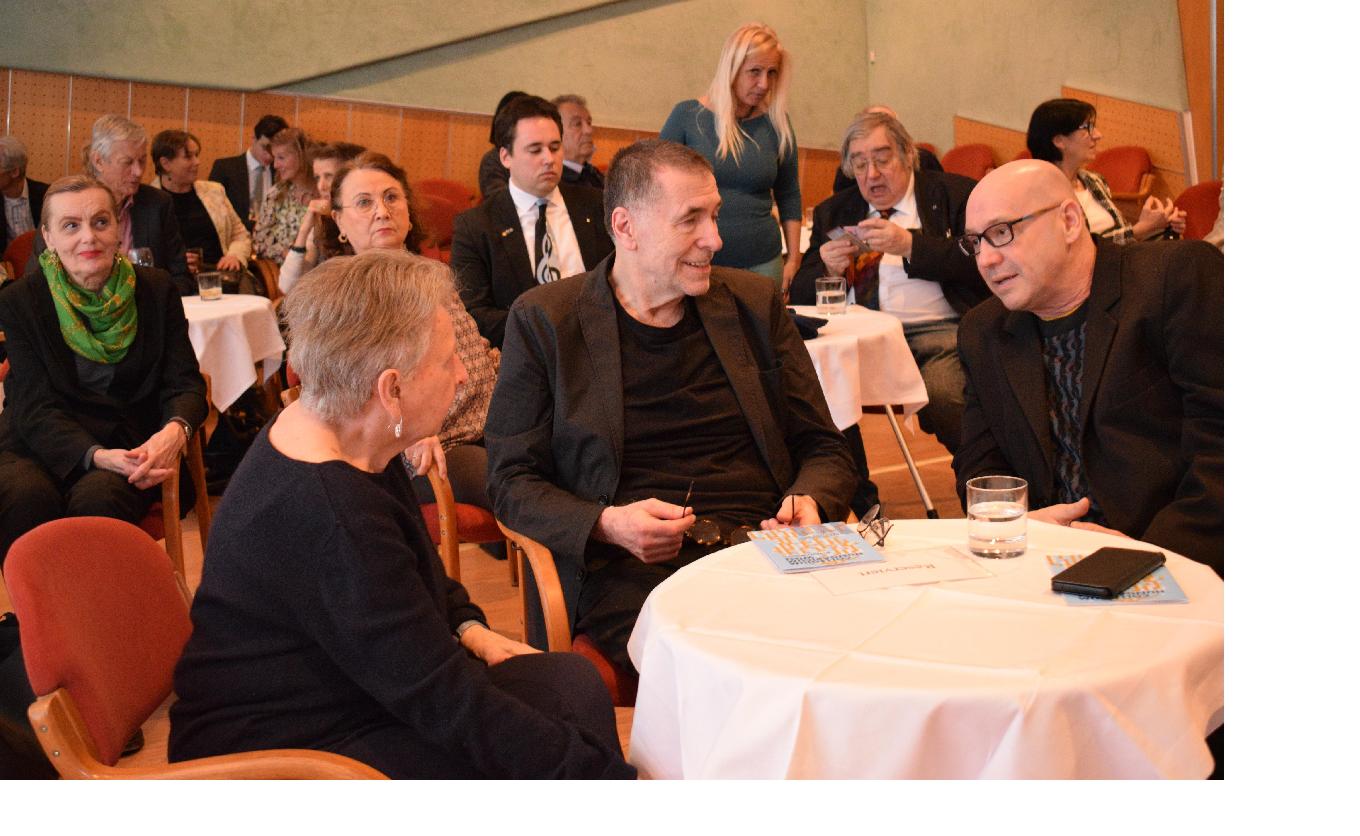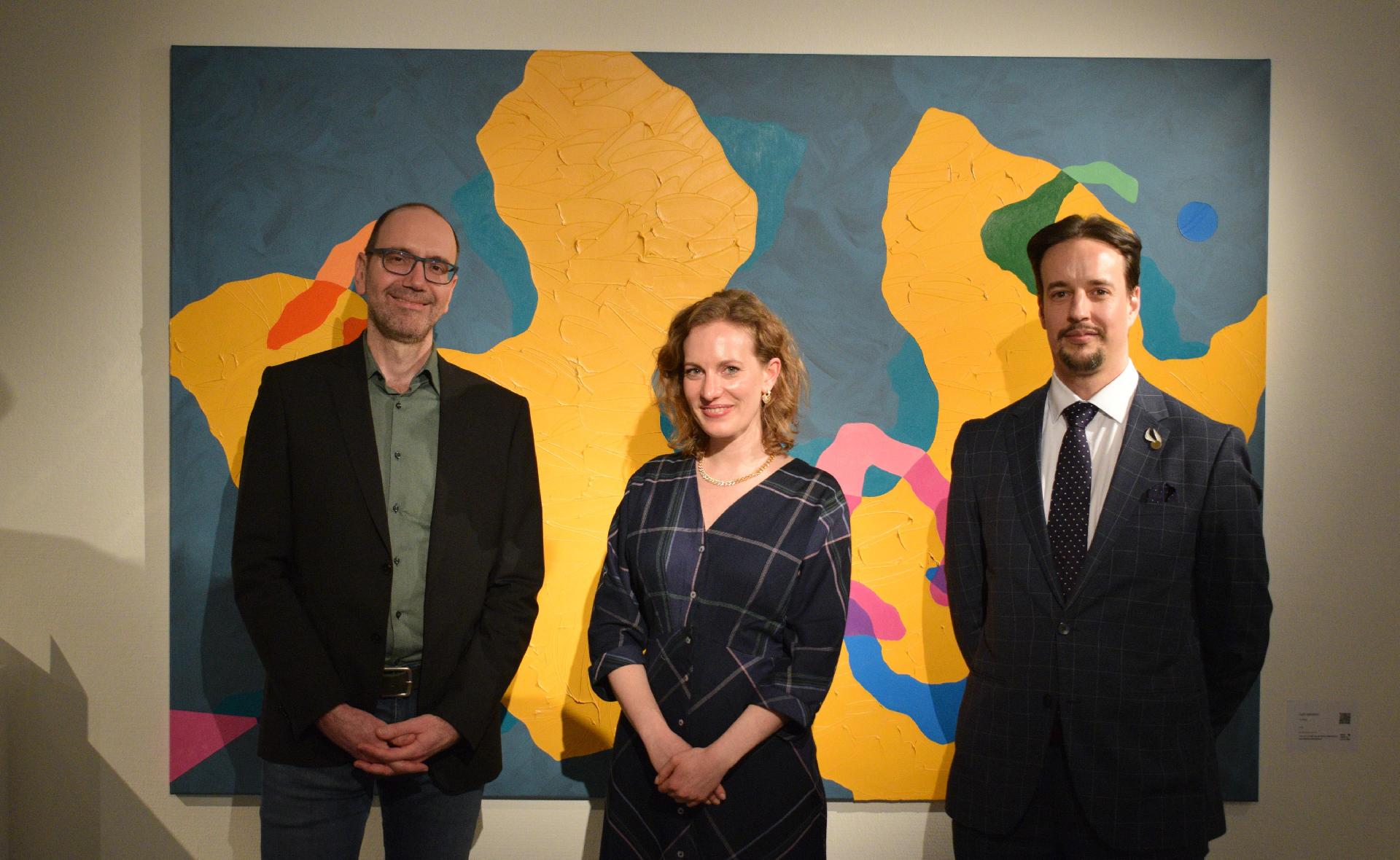
Focus on Hungarian literature, contemporary dance and fine arts in Vienna
The Collegium Hungaricum in Vienna has hosted numerous exciting programs for its visitors in recent months. In February, literature took center stage: the Viennese audience was able to discover Hungarian literature on a special “blind date” and get acquainted with works by Hungarian authors translated into German at literary evenings. The 200th anniversary of the birth of Mór Jókai was celebrated with a screening of his film adaptations. Additionally, the joint exhibition of the MNB Arts and Culture and the Metropolitan University, titled „Immersion”, was closed with a guided tour in English and Hungarian, and the late dance artist, Gyula Harangozó Sr. was also commemorated.
February 14th is not only the day of love, but also the day of book gifting. On this occasion, the Collegium Hungaricum Vienna invited those interested to an unusual book experience. Participants could choose from mysteriously wrapped books without knowing their titles. During the program, many allowed themselves to be surprised, discovered new stories, and perhaps fell in love with a book they would never have chosen otherwise.
In February, the institute organized readings in German from books by several Hungarian authors. On February 11th, visitors had the opportunity to learn about László Végel's book: “Our Unburied Past”. The author told the story of his own forgotten family history, spanning three generations. On February 17th, a reading was given from Ferenc Barnás' book: “Until the End of Our Lives.” Ferenc Barnás has published five novels so far, which have been translated into several languages. Jörg Plath, a German literary critic, described his latest work as a literary event: "This all-encompassing intensity (…) is what makes the novel what it is: an event." During the evening, Dr. Márton Méhes, the director, had a conversation with the author, and then, in a presentation by Emese Dallos, the institute's cultural manager, details were given from the book of Ferenc Barnás.
On the occasion of the 200th anniversary of Mór Jókai's birth, the Institute screened film adaptations of the classics “Egy magyar nábob” (A Hungarian Nabob) and “Kárpáthy Zoltán”. Both films were available online on February 18th, from 7 p.m. for 2x24 hours, in Hungarian with English subtitles.
On February 28, the exhibition titled “Immersion” closed at the Collegium Hungaricum Vienna, accompanied by a guided tour in English and Hungarian. The exhibition, a collaboration between Budapest Metropolitan University (METU) and MNB Arts & Culture, focused on playfulness, experimentation, and innovation. As part of a joint educational program, students specializing in graphic design, fashion, textile, and jewelry accessories developed design projects inspired by the contemporary art collection of the Hungarian National Bank (MNB). As part of the program, art historian and curator Kinga Hamvai, the head of the MNB Arts and Culture Department, guided visitors through the artworks and explained the concepts behind the projects. Dr. Peter Rada, the Vice Rector for International Affairs of METU and Dr. Peter Csizmadi, the Dean of the Faculty of Arts and Creative Industries also addressed the guests at the closing event.
On March 6th, the Institute organized a memorial evening in honor of Gyula Harangozó Sr., the founder of the Hungarian National Ballet and one of the defining figures in dance history. At the special program, renowned dancers and former colleagues recalled the artist's dance legacy through conversations, reminiscing about personal memories, and screenings of rare film and photographic materials. Gyula Harangozó left behind a lasting artistic legacy as a choreographer and ballet director from the 1930s to the end of the 1960s. His work contributed to the rise of the Hungarian National Ballet among the best in the world. His unique choreographic style is still recognizable today.

